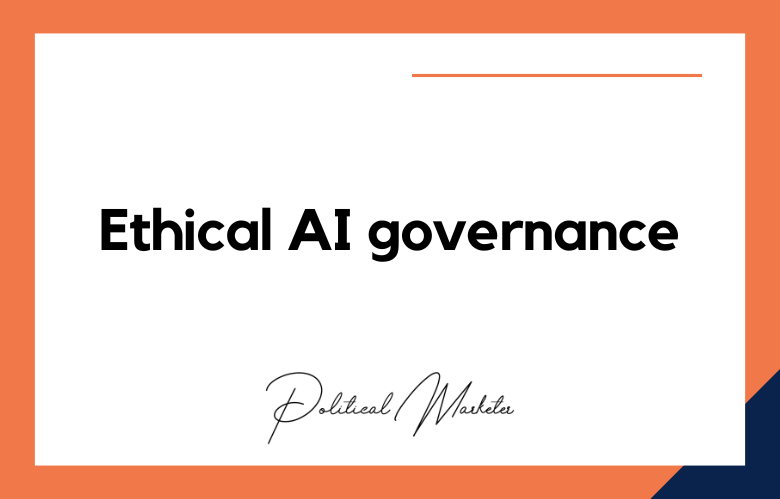In an age dominated by digital information and social media, political disinformation has emerged as a potent weapon in the arsenal of those seeking to manipulate public opinion and undermine democratic processes.
This is more evident than in campaigns targeting the United States, where the intersection of politics, technology, and media has created fertile ground for spreading falsehoods, propaganda, and conspiracy theories.
Political Disinformation: Campaigns Targeting the United States
Welcome to “Political Disinformation: Campaigns Targeting the United States,” where we journey to uncover the tactics, actors, and impacts of disinformation efforts to influence American democracy. From foreign adversaries to domestic actors, these campaigns employ various strategies – from sophisticated online manipulation to blatant misinformation – to sow discord, amplify division, and erode trust in democratic institutions.
As we delve into this complex and rapidly evolving landscape, it’s essential to understand the multifaceted nature of political disinformation. Whether it’s the spread of fake news articles on social media, the proliferation of misleading narratives in political ads, or the manipulation of online discourse through bots and trolls, the tactics employed are as diverse as they are insidious.
However, the threat of political disinformation extends beyond digital platforms. It infiltrates traditional media outlets, exploits vulnerabilities in the electoral process, and undermines the very foundations of democratic governance. In an era of hyper partisanship and information overload, distinguishing fact from fiction has never been more challenging or critical.
Yet, amidst the deluge of disinformation, there are glimmers of hope. From grassroots efforts to combat online falsehoods to technological innovations aimed at enhancing media literacy, individuals and organizations are mobilizing to defend against the corrosive effects of political manipulation. By shining a light on the tactics and strategies of those seeking to weaponize information, we empower ourselves to safeguard the integrity of our democracy.
The Impact of Social Media on Political Disinformation in the US Campaigns
Social media has fundamentally transformed the landscape of political communication, providing unprecedented opportunities for engagement, mobilization, and information dissemination. However, alongside its potential benefits, social media has also become a powerful vector for spreading political disinformation in US campaigns, with far-reaching implications for democratic processes and public discourse.
One fundamental way social media impacts political disinformation is by amplifying misleading narratives and falsehoods at an unprecedented scale and speed. Platforms like Facebook, Twitter, and YouTube are breeding grounds for misinformation, where false or misleading content can quickly go viral, reaching millions of users within hours. This viral nature of social media allows disinformation campaigns to achieve widespread visibility and influence, often without sufficient fact-checking or scrutiny.
Moreover, social media algorithms designed to maximize user engagement and attention prioritize sensational or controversial content, regardless of accuracy. This algorithmic bias can inadvertently amplify divisive and polarizing narratives, exacerbating societal divisions and undermining the integrity of public discourse. Additionally, the prevalence of echo chambers and filter bubbles on social media further reinforces existing beliefs and ideologies, making users susceptible to manipulation and confirmation bias.
Understanding the Psychology Behind Political Disinformation in the US Elections
Understanding the psychology behind political disinformation in the US elections reveals a complex interplay of cognitive biases, social dynamics, and technological influences. From confirmation bias to the echo chamber effect, individuals are predisposed to seek information aligning with their beliefs and values, creating fertile ground for spreading misinformation.
Moreover, social media platforms amplify the effects of cognitive biases by fostering echo chambers and filter bubbles, where users are exposed primarily to content that reinforces their worldview. This creates fertile ground for the dissemination of disinformation, as false narratives can quickly spread unchecked within these closed networks.
Additionally, the emotional appeal of disinformation plays a significant role in its effectiveness. Content that elicits strong emotional reactions, such as fear, anger, or outrage, is more likely to be shared widely, regardless of its veracity. This exploitation of emotions further fuels the spread of disinformation and undermines public discourse.
Unraveling the Tactics: How Political Campaigns Target the US with Disinformation
In an era dominated by social media and digital connectivity, political campaigns have adopted increasingly sophisticated tactics to sway public opinion and influence electoral outcomes. One such tactic, which has garnered significant attention in recent years, is using disinformation to manipulate voters’ perceptions and beliefs.
From fabricated news stories to misleading memes and targeted advertising, the spread of disinformation has become a pervasive and powerful tool in the political arsenal. This phenomenon is not limited to any particular ideology or party; instead, it is employed by actors across the political spectrum to shape narratives, discredit opponents, and amplify their agendas.
In the United States, where political polarization is on the rise and trust in traditional institutions is waning, the impact of disinformation on public discourse and democratic processes cannot be overstated. As the 21st-century battlefield for hearts and minds shifts online, understanding the tactics employed by political campaigns to disseminate disinformation is essential for safeguarding the integrity of the electoral process and preserving the health of democracy.
US Elections: A Deep Dive into the Spread of Misinformation
In the digital age, the landscape of electoral politics is no longer confined to traditional campaign strategies and media outlets. Instead, the rise of social media and online platforms has transformed the battleground, with misinformation emerging as a potent force shaping voter perceptions and electoral outcomes. Welcome to “US Elections Unveiled: Navigating the Maze of Misinformation,” where we embark on a deep dive into the spread of falsehoods, manipulation, and propaganda in the context of American elections.
As the cornerstone of democracy, elections serve as a fundamental mechanism for citizens to express their will and hold elected officials accountable. However, the proliferation of misinformation threatens to undermine the integrity of this democratic process, eroding trust in institutions, distorting public discourse, and sowing seeds of division within society.
In this exploration, we will peel back the misinformation surrounding US elections, shedding light on deceptive campaigns’ tactics, actors, and impacts. From foreign interference to domestic disinformation networks, spreading falsehoods knows no bounds, exploiting vulnerabilities in the digital ecosystem to manipulate public opinion and influence electoral outcomes.
The Role of Technology in Amplifying Political Disinformation in the United States
The role of technology in amplifying political disinformation in the United States cannot be overstated. With the advent of social media and digital communication platforms, misinformation and propaganda can spread rapidly and reach a broad audience with unprecedented ease.
Firstly, social media algorithms play a significant role in amplifying political disinformation.
These algorithms are designed to prioritize content that generates high levels of engagement, such as likes, shares, and comments. As a result, sensationalist or polarizing content tends to be promoted, regardless of its veracity. This creates an environment where false information can go viral quickly, perpetuating echo chambers and filter bubbles where individuals are only exposed to content that reinforces their existing beliefs.
Furthermore, the anonymity and accessibility of digital platforms make it easier for malicious actors to disseminate disinformation without accountability. Foreign actors, political operatives, and fringe groups can create fake accounts or use bots to amplify false narratives, sow division, and undermine trust in democratic institutions.
Conclusion
The implications of political disinformation campaigns targeting the United States are far-reaching and profound. As evidenced by the highlighted examples, these campaigns pose significant threats to the integrity of democratic processes, societal cohesion, and public trust in institutions.
Addressing the scourge of disinformation requires a multifaceted approach involving collaboration between governments, technology companies, civil society organizations, and citizens. By enhancing media literacy, promoting critical thinking skills, and fostering transparency in digital platforms, we can empower individuals to discern fact from fiction and resist manipulation.
Moreover, concerted efforts to hold perpetrators of disinformation accountable, whether through legal mechanisms or public condemnation, are essential to deter future abuses and safeguard democratic principles.










